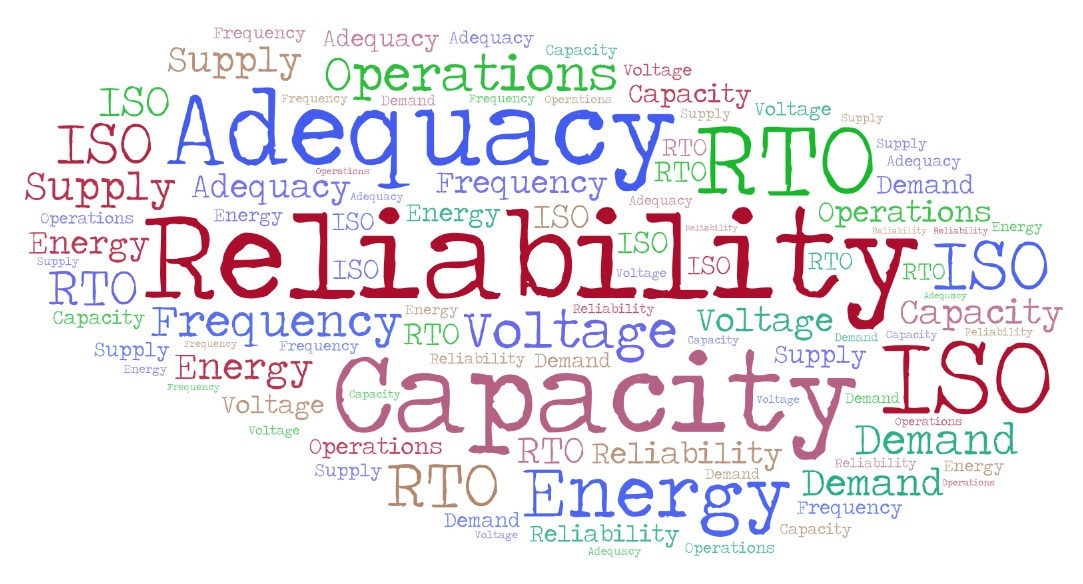As our power system resource mix evolves to meet decarbonization policy objectives, it is important that people know some of the key concepts associated with reliability to understand the impacts that power supply changes are having and will continue to have on power system operations and reliability. I suggest there are four key concepts that everyone should be familiar with to properly understand the changes our power systems are undergoing, and the intent of this article is to explain these fundamental concepts.
Resource Adequacy & Reliability
I often see resource adequacy and reliability being equated, but they are actually different concepts. Here are the formal NERC definitions for what are commonly called “resource adequacy” and “reliability”:
Adequacy – the ability of the electric system to supply the aggregate electrical demand and energy requirements of the end-use customers at all times, taking into account scheduled and reasonably expected unscheduled outages of system elements.
Reliable Operation – operating the elements of the Bulk-Power System within equipment and electric system thermal, voltage, and stability limits so that instability, uncontrolled separation, or cascading failures of such system will not occur as a result of a sudden disturbance, including a cybersecurity incident, or unanticipated failure of system elements.
Adequacy (aka resource adequacy) means having enough supply to meet demand at all times while reliable operation (aka reliability) means being able to operate the power system within all technical parameters under all conditions and contingencies. So, you can have a system with adequate resources that isn’t reliable, and you can have a reliable system without adequate resources. What we want is a system that is both adequate and reliable.
The recent Alberta supply shortfall near miss in mid-January 2024 was a good example of a power system that was operating reliably but came dangerously close to having inadequate supply. Many observers characterized this as a reliability problem, but it was actually a resource adequacy problem.
A very important point to understand is that in jurisdictions with deregulated electricity markets, which are the ISO/RTO regions, the ISO/RTO is only responsible for reliable operations, not resource adequacy. I’ll explain.
ISOs/RTOs are responsible for ensuring the “reliable operation” of the power systems they control, in accordance with NERC reliability standards. However, while the ISOs/RTOs monitor resource adequacy and they do all they can to notify their market participants of the supply adequacy of their systems, they are not responsible for setting resource adequacy requirements. In addition, the NERC mandatory reliability standards do not mandate resource adequacy or specify a generation reserve margin.
Governments (federal, provincial/state, municipal) determine resource adequacy requirements and desired generating resource mix objectives through public policy, or lack thereof. In market-based systems (ISO/RTO areas), it is up to private investors to build the right types of generation at the right times in the right places on the power system to provide sufficient resource adequacy. This is why electricity market design and accurate and timely price and locational signals in wholesale electricity markets are so vitally important.
In fully regulated, vertically integrated jurisdictions, like the Canadian provinces of BC, Saskatchewan, and Manitoba, vertically integrated utilities plan, own, and operate generation, transmission, and distribution in accordance with public policy objectives and are responsible for both resource adequacy and reliability.
Capacity & Energy
I often observe confusion between energy and capacity when people write about or discuss the power system. To clarify, here are the definitions of electrical energy and capacity:
Energy - the generation of electric power by a device over a period of time. Typically expressed in kilowatt-hours (kWh) or megawatt-hours (MWh).
Capacity - the maximum output that a generator can produce. Typically expressed in kilowatts (kW) or megawatts (MW). This is the rating of a generator and system operators depend on capacity being available for dispatch to ensure reliability and supply adequacy.
Renewable generators (wind, solar), have very low capacity value from an operational perspective because the system operator cannot depend on their capacity being available at all times and they cannot be dispatched, so they are viewed almost exclusively as energy resources. Dispatchable generators (gas and steam turbines, hydroelectric generators) provide both capacity and energy because the system operator can depend on the availability of their capacity as well as the energy they can provide. We need both capacity and energy, but it is dispatchable capacity that system operators depend on for both resource adequacy and reliable operations.
Several Independent System Operators (ISOs) and Regional Transmission Organizations (RTOs) have rigorous processes for “accrediting” generator capacity values to ensure they understand the actual capacity available in their control areas for resource adequacy planning and operational reliability purposes. The NY ISO accreditation process is a good example of the rigour that system operators apply to understanding the capacity they have available in their operational footprint.
Here's a good overview of energy and capacity from ISO New England: Capacity vs Energy
Final Thoughts
Understanding these four concepts is essential for understanding power system planning and operations. Unfortunately, it seems these concepts have not been well understood by many policy makers over the past few years and this has resulted in a variety of negative impacts to power system resource adequacy, reliability, and affordability.
For those interested in more than these four power system terms, below is a link to the NERC glossary of terms used in the mandatory reliability standards. This is the “go to” for all power system definitions. In addition, EPRI provides a number of excellent resources on resource adequacy that can benefit all policy makers and power system planners, so I’ve provided a link below.





I agree there are many who don’t understand the difference between energy and capacity.
Great informative post — thanks